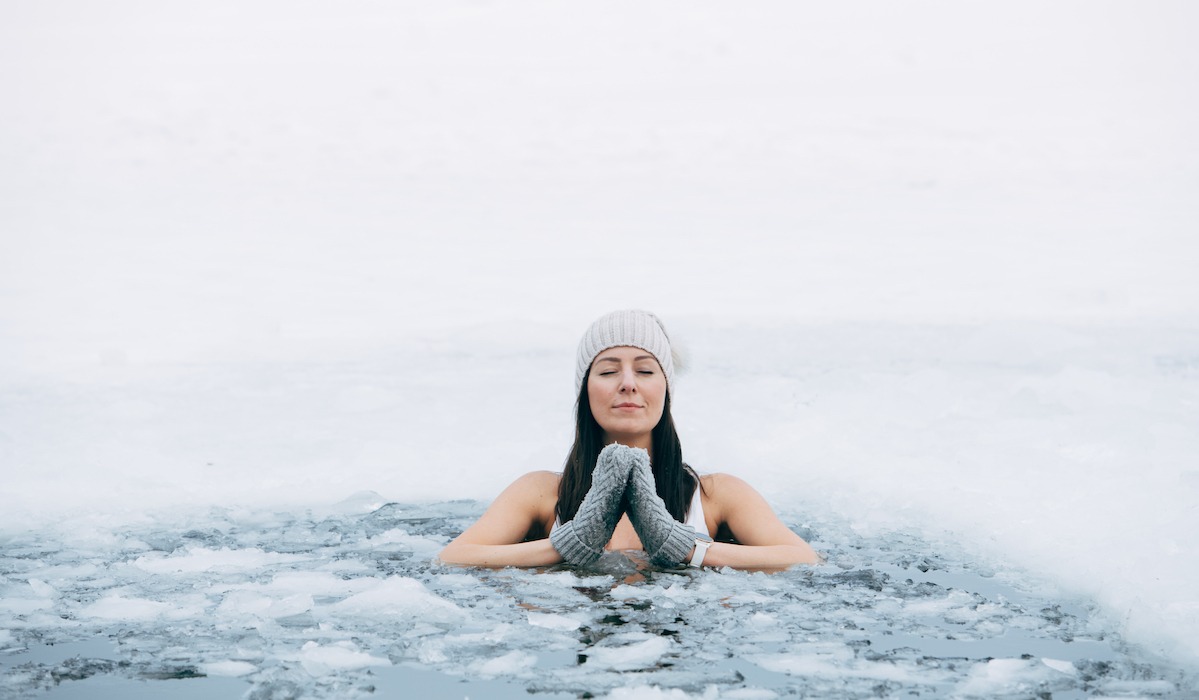As Canadians, we are conditioned to grumble about the cold, undoubtedly due to enduring sub-zero temperatures every winter (we are basically superheroes.) And while yes, four months of cold is never fun, immersing our bodies to the cold for short periods of time has numerous health benefits and can actually be quite enjoyable
Used as a form of therapy for generations in many cultures, celebs, athletes and health experts alike are true believers in the benefits of cold therapy (also known as cryotherapy.)
Here are a just a few of those health benefits, as well as methods for getting the most out of the cold.
Activate Natural Healing. Cold water immersion activates the body’s natural healing powers, strengthening our immune, lymphatic, circulatory and digestive systems. This can relieve the symptoms of many health conditions and enhance overall quality of life.
Boost Our Mood. Immersing the body in ultra-cold temperatures can cause physiological hormonal responses. This includes the release of adrenaline, noradrenaline, and endorphins. This can have a positive effect on those experiencing mood disorders like anxiety and depression.
Facilitate Weight Loss. As noted above, cryotherapy releases Norepinephrine, a neurotransmitter that not only gives us a mood enhancing boost, but also boosts the metabolism. This in turn helps our bodies burn more calories to aid in weight loss when paired with a healthy lifestyle and exercise.
Reduce Migraine Symptoms. Applying cold compresses to the neck, such as an ice pack has been known to reduce pain caused by migraines by cooling the nerves in the neck area. Since our carotid arteries are close to the skin’s surface, the cold from ice packs works to cool the blood passing through these intracranial vessels, relieving pressure.
Soothe Skin Conditions. Cryotherapy is known to improve antioxidant levels in the blood, simultaneously reducing inflammation. Used locally or across the entire body, the cold temps can significantly improve the dry, itchy skin associated with atopic dermatitis, a chronic inflammatory skin disease.
Cold Therapy Treatments
Ice Bath. Typically used by athletes for recovery after intense training sessions. Fill your bath with a water to ice ratio of 3:1 and wait 10 minutes for the temperature to drop to 10-15 degrees Celsius. Experts recommend sitting in the bath for 15 minutes to get the most benefits.
Cold Shower. At the end of your warm shower turn the dial to as cold as you can stand. Start with a goal of 15-30 seconds, progressing to no more than two minutes of cold over time.
Get Outside. Avoid the desire to hibernate inside on cold winter days. Studies have shown that exercising in cold weather can transform white fat, specifically belly and thigh fat, into calorie-burning brown fat. You’ll also get a burst of Vitamin D to help fight off seasonal affective disorder, better known as SAD.
Polar Bear Dip. Usually organized as a community event, the polar bear dip sees participants running into the icy cold lakes of Canada to show their true mental and physical strength, while also reaping the benefits of the icy cold water on their internal systems.
Ice Packs. Cold Therapy doesn’t always have to involve the entire body. Ice packs, or a trusty bag of frozen peas can go a long way in reducing inflammation and treating injuries and sore muscles. Just remember to always put a barrier such as a piece of clothing between your skin and the icepack to prevent irritation.
Cryotherapy Spa. Growing in popularity, many spas, like Spa Cloud in Montreal, have a cryotherapy chamber where people sit or stand in sub-zero temperatures for a few minutes. This is controlled by professionals and exposure time is limited for safety.
View this post on Instagram
Please Note:
While there are many health benefits to cold therapy, there are also precautions that should ways be taken. Pregnant women, children, people with high blood pressure, and people with heart conditions should not try advanced forms of cold therapy, such as full-body cryotherapy. Cold therapy treatments should never last longer than a few minutes and you should never fall asleep during a treatment for risk of extending that timeframe.
